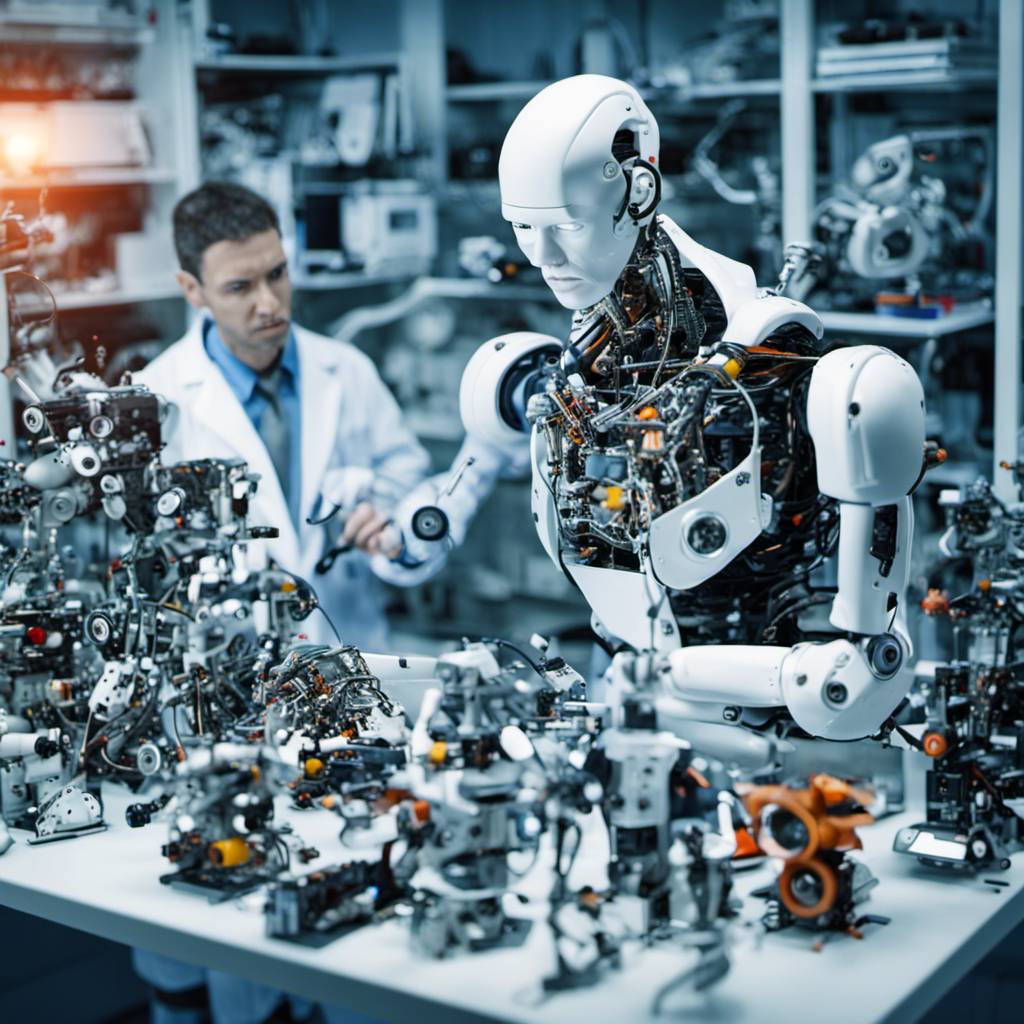The burgeoning field of evolutionary robotics, a branch of robotics that focuses on the development of artificial “organisms” capable of enhancing their abilities and physical configuration in response to their environment, has been making significant strides. This progress is largely due to the advancements in artificial intelligence (AI). However, a major stumbling block has been the efficient transition of robots from simulations to real-world scenarios without compromising their capabilities and performance.
A recent research paper authored by a team from the University of York, Edinburgh Napier University, Vrije Universiteit Amsterdam, University of the West of England, and University of Sunderland delves into the influence hardware can have on the development space of these evolvable robots. The study was published in Frontiers in Robotics and AI.
Mike Angus, a research engineer involved in the study, shared with Tech Xplore, “The path to bringing evolutionary robotics into the realm of hardware to create practical and beneficial robots is fraught with challenges.” The team embarked on the ARE project, an ambitious hybrid ecosystem that amalgamates simulated and autonomously fabricated robots. Utilizing a unique semi-modular approach, the robot bodies were 3D printed and fitted with sensors and actuators in the form of modular ‘organs’. This resulted in a more expansive morphological space than previous endeavors in hardware robot evolution.
The study was motivated by two significant observations. Firstly, previous research in evolutionary robotics has seldom delved into the technical aspects related to the physical implementation of evolvable robots. Secondly, these technical details are instrumental to the real-world performance of these systems and warrant further exploration.
Angus elaborated, “In our journey to develop a hardware platform for evolving robots, we found that the interplay between evolutionary processes and hardware implementation is intricate. Neither can be effectively designed without detailed consideration of the other.”
The objective of the paper was to reconcile these two worlds by providing a technical specialist’s perspective on hardware design while observing its effects on the evolutionary process. This highlighted how every aspect of hardware implementation can impact the evolutionary space.
The team designed an innovative evolutionary robotics platform that can autonomously manufacture diverse robot “phenotypes” using 3D printing. This system enables the creation of various “species” of robots with different morphologies and body structures. This eliminates the need for manual assembly of numerous robot generations which would be expensive and time-consuming.
The team’s approach combined a 3D printed plastic skeleton with clip-on modular “organs” that provide essential functionalities like movement, sensing, processing, and power. “The body shape and organ configuration is defined generatively by a compositional pattern-producing network (CPPN), which are then evolved,” said Angus.
However, upon evaluating their proposed system, the team discovered that it provided a limited exploration space for evolving robots and was challenging to navigate due to physical constraints rendering many evolved designs unfeasible. They realized they needed additional methods to ensure the feasibility of robots in the evolving population, which would impact the overall success of the evolutionary process.
The researchers introduced a concept they call “viable phenotype space”. This term refers to understanding how an evolvable robot platform’s exploration space is affected by constraints set by its hardware implementation.
“Much of evolutionary robotics research relies on simulation, where hardware constraints are easily omitted,” Angus said. “However, as we try to bring evolutionary robotics towards solving practical problems in the real world, where the challenges are more complex, this principle becomes increasingly significant.”
The research introduces a novel idea that could guide the development of new evolutionary robotic systems. It suggests that effective evolutionary robotic systems depend on their creators’ ability to consciously shape their “viable phenotype space”. This space should align with the tasks and missions that specific robots are designed to tackle.
In essence, if evolutionary roboticists employ conventional design approaches when creating both hardware and evolutionary algorithms for their systems, their ability to evolve practical robots will be very limited. By following their proposed principles and theoretical perspective, they could create more adaptive and high-performing evolved robots.
Edgar Buchanan Berumen, co-author of the paper, outlined three possible directions for future research. “We aim to enable evolutionary algorithms to operate within the viable phenotype space more effectively,” he said. “We would like to develop a new methodology to aid evolutionary roboticists in designing their systems.
